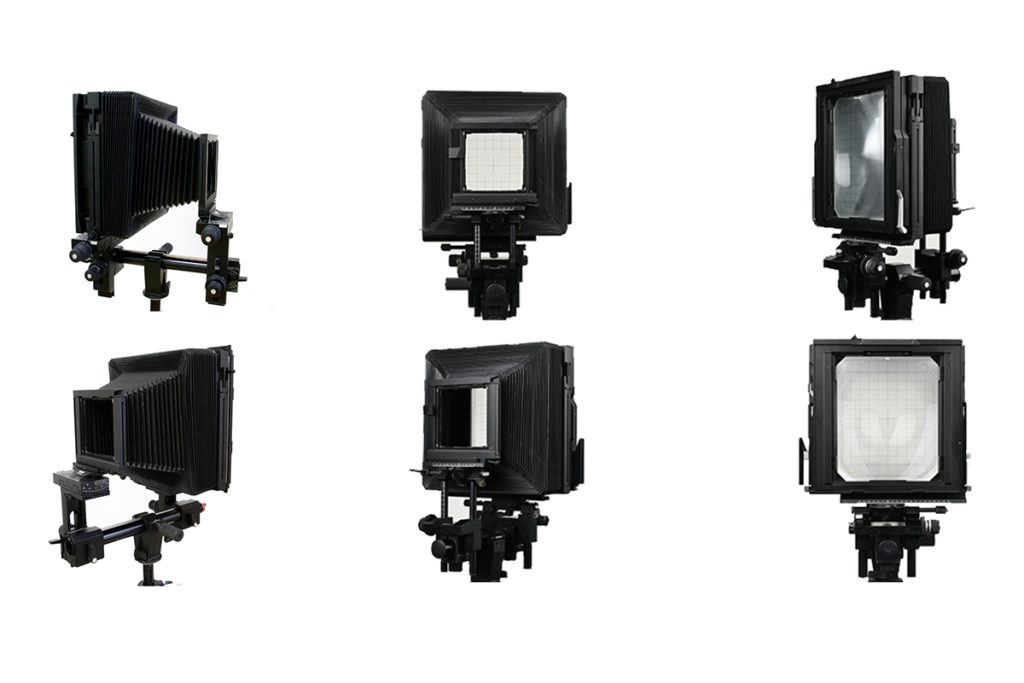Sinar P2 Large Format Camera 8×10
In this Post, I want to talk about the Sinar P2 Large Format Camera 8×10. As most of you know, this camera is a modular camera that can be adapted to sizes 4×5, 5×7, or 8×10. Also, it can also be adapted to the European equivalents 9×12, 13×18, or 18×24, respectively. The modularity is not restricted to picture sizes, also it does not hold for other cameras of the Sinar system.

About Sinar P2 Large Format Camera 8×10 Backs
Description
I want to start with the Glass. Each ground glass has clipped corners, which are used to check for vignetting and the positioning of the compendium mask. This is achieved by looking through the corner to the rear of the stopped-down lens. The entire circle of the diaphragm must be visible to exclude vignetting. The same holds for the positioning of the compendium masks, which should just be invisible from the opposite corner. For the 4×5 back, the clipped corners are inside the picture area. However, they are outside on the 5×7 and 8×10 backs.
For roll film, Sinar provides cassettes that can be inserted like a double dark slide. They are bulkier than Graflok cassettes but quicker to use. The picture shows a Zoom 2 cassette, which is adjustable for the formats 4,5×6, 6×6, 6×7, 6×9, and 6×12 even between shots. Changing to smaller formats causes loss of film. However, it is not a significant disadvantage to using the simpler Vario cassette instead. It offers the same sizes but they can be set only for the entire roll.
Besides these adjustable cassettes, there are also cassettes for fixed formats. Also, the picture frame is shown with an adjustable mask in front of the ground glass.
If you want to change, To change the format of the 4×5 camera to 5×7 or 8×10, three parts are needed:
- a format frame, which is attached to the rear bearer
- a bellows of the corresponding size
- a corresponding back. These can be attached for vertical or horizontal orientation. For 8×10 there are two versions, one for use with the booster and the other without this capability
- Furthermore, the P2 8×10 has a more stable bank holder, which is equipped with a metal bracket on top. Of course, this holder is also useable with smaller formats.
The front standard is identical for all formats. more
More About Sinar
Sinar Photography AG is a Swiss company based in Zurich manufacturing specialized high-resolution view cameras for studio, reproduction, landscape, and architecture photography.
Sinar’s view-cameras allow both the lens and the film back or sensor back to move in rotation or linearly in any direction (up/down, left/right, front back linearly, and pitch yaw, tilt rotations). This allows precise image alignment corrections. The cameras are thus often used in advertising, document reproduction, product, and architectural photography. These require correctly vertical image lines, fine focus accuracy, and extra details.
About Sinar P-series
The Sinar P, introduced in 1970, had asymmetric tilts and swings, as opposed to the traditional center or base tilts. This permitted rapid and precise settings without losing sharpness on the axis.
The P series also introduced features such as self-arresting rack and pinion gearing. It also introduced a precision-engineered quick format change system. This allows the photographer to switch between 4×5, 5×7, 8×10, formats quickly without having to fully disassemble the rear standard.
This was accomplished by using a common rear standard-bearer and unlocking a single knob to switch among the various format frames. Another new feature implemented in the P series was the Sinar system of calculating swings and tilts as well as the Sinar depth of field calculator. A key feature of the Sinar P system, particularly in the domain of scientific and industrial photography, is the precise machine tolerances that are part of the fittings and movements more.


1 Thought on Sinar P2 Large Format Camera 8×10